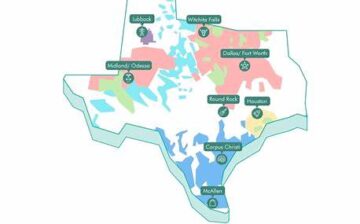
The COVID pandemic changed nearly all aspects of American society and affected every industry to some extent. The State of Moving industry was greatly impacted by the social and economic changes brought on during the pandemic and experienced lasting changes.
How did COVID affect the moving business and how does it continue to do so? What does the future hold for the moving industry? This post will take a look at current trends in the moving business in 2022 and beyond. We will describe how COVID and the socioeconomic changes in the U.S. have altered the moving landscape.
If you’re planning to be one of the nearly 30 million people in the U.S. who move each year, you may be interested to know how moving costs and availability of moving companies will change in the next few years.
The Moving Industry Faced Higher Costs and Shortages During COVID
The moving industry grew one percent per year from 2017 to 2022. The pandemic didn’t shut the industry down because it was deemed an essential service, and therefore, moving companies were allowed to continue operation.
Nevertheless, the pandemic did force movers to adjust to new realities like social distancing, minimizing contact with customers and other employees, wearing of masks for eight to 10 hours per day, daily temperature checks, and extensive hygiene requirements like using hand sanitizer.
Movers adapted to these restrictions by changing how they did business. Instead of visiting customers in their homes, much of the communication and moving estimation were accomplished by phone and video. To limit contact, many companies had employees travel in separate vehicles. And many companies switched to having customers complete their paperwork digitally and by email.
On top of these changes, moving companies were faced during the pandemic with high fuel prices and supply shortages, like everyone else. “[The cost of] everything from packing supplies to trucks increased,” said Ms. Dayan, CEO of All Around Moving. Companies also suffered a shortage of truck drivers, packers and movers, particularly on the West Coast and in New York.
Meanwhile, the demand for moving services increased dramatically. During the pandemic, many people began working remotely and moved out of the cities to small towns and the countryside. Additionally, many college campuses closed and students moved back home or to other areas.
The U.S. Postal Service typically receives 37 million change of address requests per year; during the pandemic, it received two million per week, or 192 million per year. Between 2019 and 2020, there was a 3.3 percent increase in permanent change of address requests and a 41.3 percent increase in temporary requests. From 2020 to 2021, there was a decrease in temporary moves and an increase in permanent moves.
One common reason that people moved was to save costs. Since many people no longer needed to live near work or school, moving to less expensive areas enabled them to save on housing costs. Another reason was for safety during the pandemic. A 2021 survey found 26 percent of the population had relocated for health reasons.
The five cities that lost the most people were New York, New Orleans, Washington, D.C., Detroit, and Chicago. Among the top places that people moved to in 2021 were Boise, ID, Knoxville, TN, Sarasota, FL, and Asheville, NC.
The shortage of supplies combined with increased demand for moving services led to delays. Customers across the country saw delays in getting their household goods packed up and delivered. Many customers in California, New York, and Florida waited four to six weeks for their items to be delivered.
In order to better ensure on-time deliveries, some companies began reducing the number of customers they took on, which led to more shortages of moving services at a time when demand was at a record high.
Costs Remain Historically High
While the pandemic is largely behind us, the moving industry has lingering effects and faces new economic challenges. Moving out of state is still more expensive than two years ago. Diesel fuel remains expensive, almost twice as much as in 2020. The cost of all packing and moving materials has doubled or tripled. And lack of people in the labor force is causing a shortage of packers and movers. The cost of storage space has also increased.
Migration patterns have also contributed to cost increases. The West Coast, particularly California, is experiencing an exodus of people. Many people are moving out of the region and very few are moving in from other parts of the U.S.
This creates problems for moving companies because they rely on having full trucks on both legs of a trip. If trucks leaving California are full and those returning are empty, this increases their costs. According to Morales, a move from California to New York with 1,000 cubic feet of household goods cost about 20 percent more in 2021 than in 2020.
In a survey, 72 percent of moving customers said that they’re seeing prices up to 25 percent higher than in previous years. Additionally, 66 percent said they experienced delays on interstate moves of one to seven days.
Present Trends Will Probably Continue
While moving costs are higher than before, the demand is relocation services is likely to remain high. Although 68 percent of people who moved during the pandemic say it was more difficult than before the pandemic, 59 percent report they are likely to move again. Also, 68 percent of renters are planning future moves, with 60 percent reporting they would like to move into their own home in the next three years.
Meanwhile, the migration out of large cities to suburban and rural areas is expected to continue. Crime, high housing costs, and remote work are the main factors driving the movement out of cities. Many smaller and less pricey towns are offering incentives to attract new residents. Tulsa, OK recently offered thousands of dollars to workers to move to the city. Other small towns in Texas and Florida did the same.
People are also continuing to move out of California, New York, Illinois, Washington State of Moving , and New Jersey, in favor of Texas, Florida and Colorado.
While the pandemic saw a short-term increase in moves, overall the number of people moving in the U.S. has been decreasing. About half the number of people move today as in the 1950s. This is partly due to the aging of the population. Young adults in their 20s move the most; as the U.S. population gets older on average, the number of moves will decrease.
High housing prices and mortgage rates are also causing people not to purchase and move into new homes. Finally, the increase in dual-income households and people working at home may also be contributing, since single-income families and those who work outside the home tend to move more.
Conclusion
The COVID pandemic increased demand for moving services but also created shortages and delays. The pandemic is subsiding, but moving costs are higher than before the pandemic because of higher fuel prices and supply and labor shortages. Nevertheless, the moving industry remains one of the largest in the country. Moving professionals like All Around Moving are ready to help you with your next State of Moving . If you’re considering a move across town or across the country, call All Around Moving today.
We hope you found this post, State of Moving: Moving Trends and Lasting Effects of COVID, useful. Be sure to check out our post Important Reasons You Should Get Moving Insurance for more great information.
Have Experience in the Moving Industry? Want an Additional Income Stream? Work With All Around Moving!
Possessing experience in the shipping industry, and or moving, and are looking for additional Income stream opportunity? Read what All Around Moving has to offer to you!
The Work With Us program, it affords experienced moving consultants with the special opportunity to develop their moving consultant business from anywhere, any city in the U.S.A.
We will provide you with a complete set-up to run your business. To learn more, click here.





